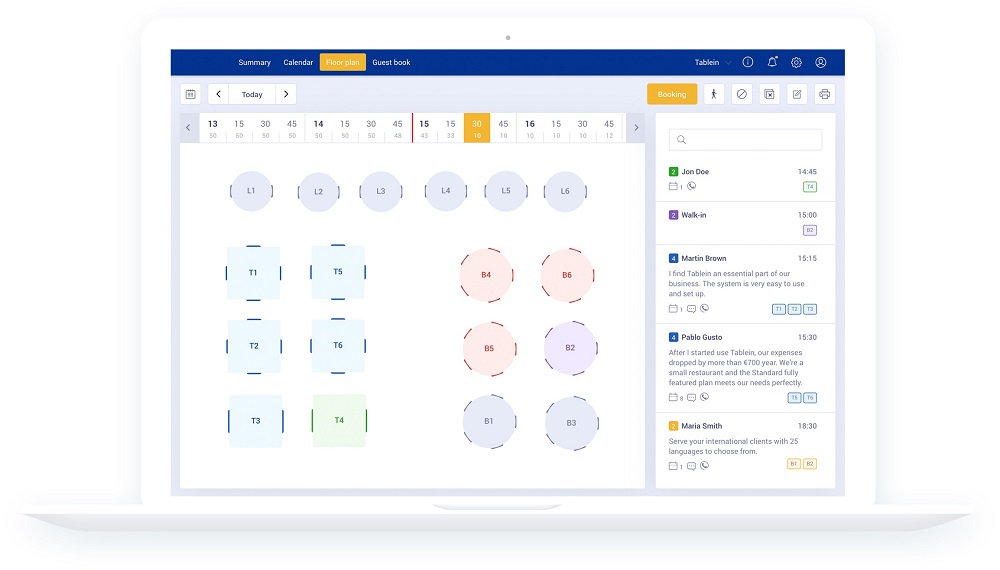Introduction:
In the dynamic landscape of the restaurant industry, staying ahead of the competition requires embracing technology that enhances customer satisfaction and operational efficiency. One such technological boon that has revolutionized the dining experience is the Restaurant Table Reservation System. In this comprehensive guide, we will delve into the significance of these systems, their benefits for both patrons and restaurant owners, and how implementing them can elevate your establishment to new heights.
Chapter 1: The Evolution of Dining Out
The traditional dining-out experience often involved long waits, uncertainty about table availability, and occasional frustration for both customers and restaurant staff. With the advent of the digital era, the restaurant industry underwent a significant transformation. The introduction of restaurant table reservation systems marked a paradigm shift, allowing patrons to plan their dining experiences with ease and providing restaurant owners with valuable tools for managing their establishments more efficiently.
Chapter 2: The Role of Restaurant Table Reservation Systems
A restaurant table reservation system is a software solution that enables customers to book tables in advance, either through a website, mobile app, or a phone call. These systems streamline the entire reservation process, from booking to confirmation, and even facilitate communication between the restaurant and its patrons. The multifaceted benefits of implementing such a system extend beyond just managing reservations, making it an indispensable tool for modern dining establishments.
Chapter 3: Enhancing Customer Convenience
One of the primary advantages of a restaurant table reservation system is the convenience it offers to customers. With just a few clicks, diners can secure a spot at their preferred restaurant without the hassle of waiting in long queues or facing the uncertainty of table availability. This convenience is especially crucial for busy urban dwellers who value their time and seek efficient dining solutions.
Chapter 4: Improving Operational Efficiency
From the perspective of restaurant owners and managers, a reservation system streamlines the reservation process, making it more organized and efficient. This translates into better table turnover, reduced wait times, and improved overall customer satisfaction. Additionally, these systems often include features for tracking customer preferences and dining history, allowing establishments to provide personalized experiences and build lasting relationships with their patrons.
Chapter 5: Optimizing Staff Management
A restaurant table reservation system isn’t just about catering to customers; it also aids in optimizing staff management. By providing real-time information on reservations and expected foot traffic, managers can allocate staff resources more effectively. This not only enhances service quality but also helps in minimizing operational costs by aligning staff levels with actual demand.
Chapter 6: Customization and Integration
Modern reservation systems offer a high degree of customization to suit the unique needs of different restaurants. From defining specific time slots for reservations to integrating with other restaurant management tools such as point-of-sale systems and inventory management, these systems provide a comprehensive solution for the entire dining establishment. The ability to integrate seamlessly with existing technologies ensures a smooth and efficient operation.
Chapter 7: Data-Driven Decision Making
The data generated by a restaurant table reservation system is a goldmine for informed decision-making. Analyzing reservation patterns, peak hours, and customer preferences can help restaurant owners make strategic decisions regarding menu offerings, pricing, and marketing strategies. This data-driven approach empowers establishments to stay agile and adapt to evolving consumer trends.
Chapter 8: Overcoming Challenges
While restaurant table reservation systems offer numerous benefits, there are challenges that establishments may face during implementation. These challenges include adapting to new technologies, ensuring a user-friendly interface, and addressing concerns about data privacy. Overcoming these challenges requires a proactive approach, thorough staff training, and continuous improvement based on customer feedback.
Chapter 9: Best Practices for Implementation
To maximize the benefits of a restaurant table reservation system, it’s essential to follow best practices during implementation. This includes selecting a system that aligns with the restaurant’s specific needs, providing thorough staff training, and promoting the new reservation process to customers. Implementing a phased approach and seeking feedback from both staff and patrons can help fine-tune the system for optimal performance.
Chapter 10: Success Stories
Several restaurants have witnessed remarkable success after implementing table reservation systems. Case studies and success stories highlight the positive impact on customer satisfaction, operational efficiency, and overall business growth. Learning from these experiences can inspire other establishments to embrace this technology and unlock its full potential.
Conclusion:
The restaurant table reservation system has emerged as a game-changer in the competitive world of dining. Its ability to enhance customer convenience, optimize operational efficiency, and provide valuable insights through data-driven decision-making makes it an indispensable tool for modern restaurants. As the industry continues to evolve, embracing innovative solutions like reservation systems is not just a choice but a strategic necessity for those aiming to thrive in the ever-changing landscape of dining experiences.


